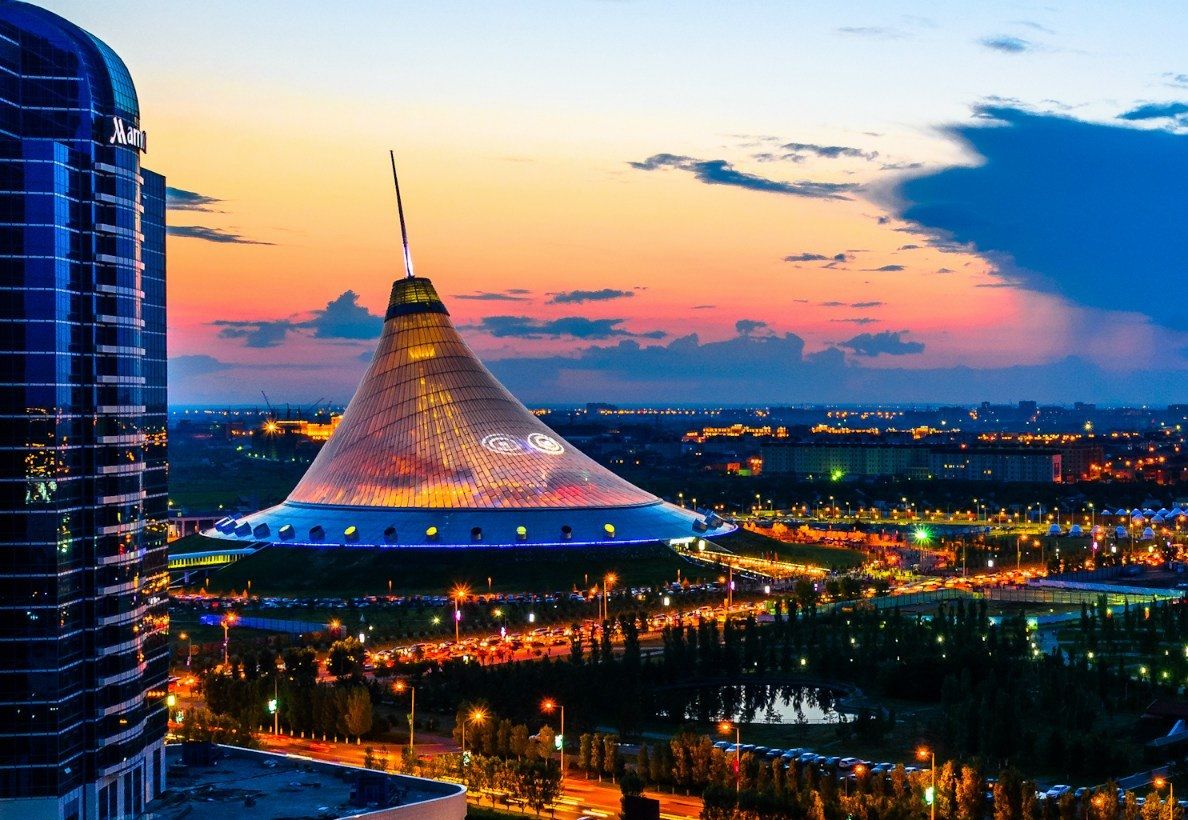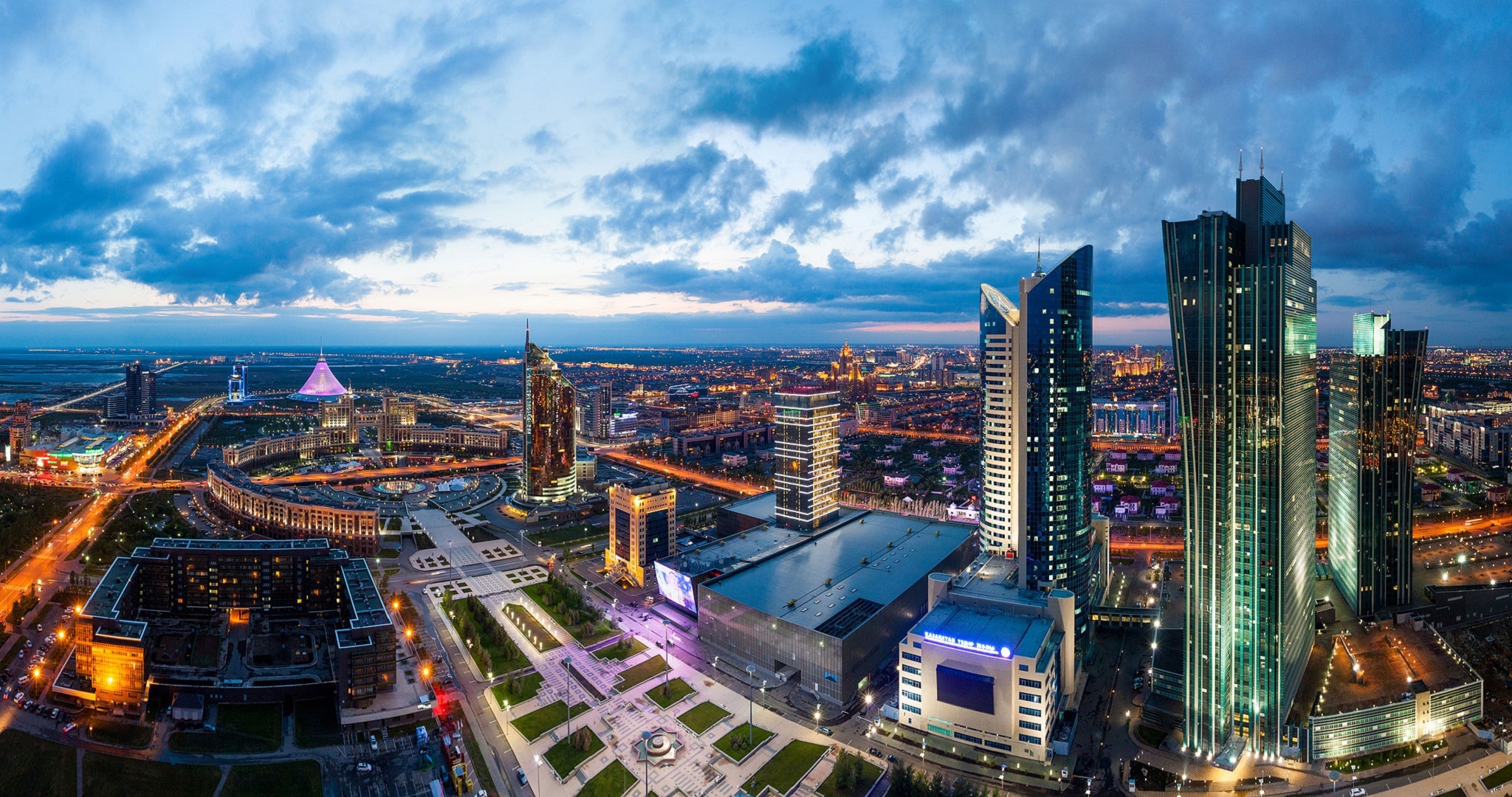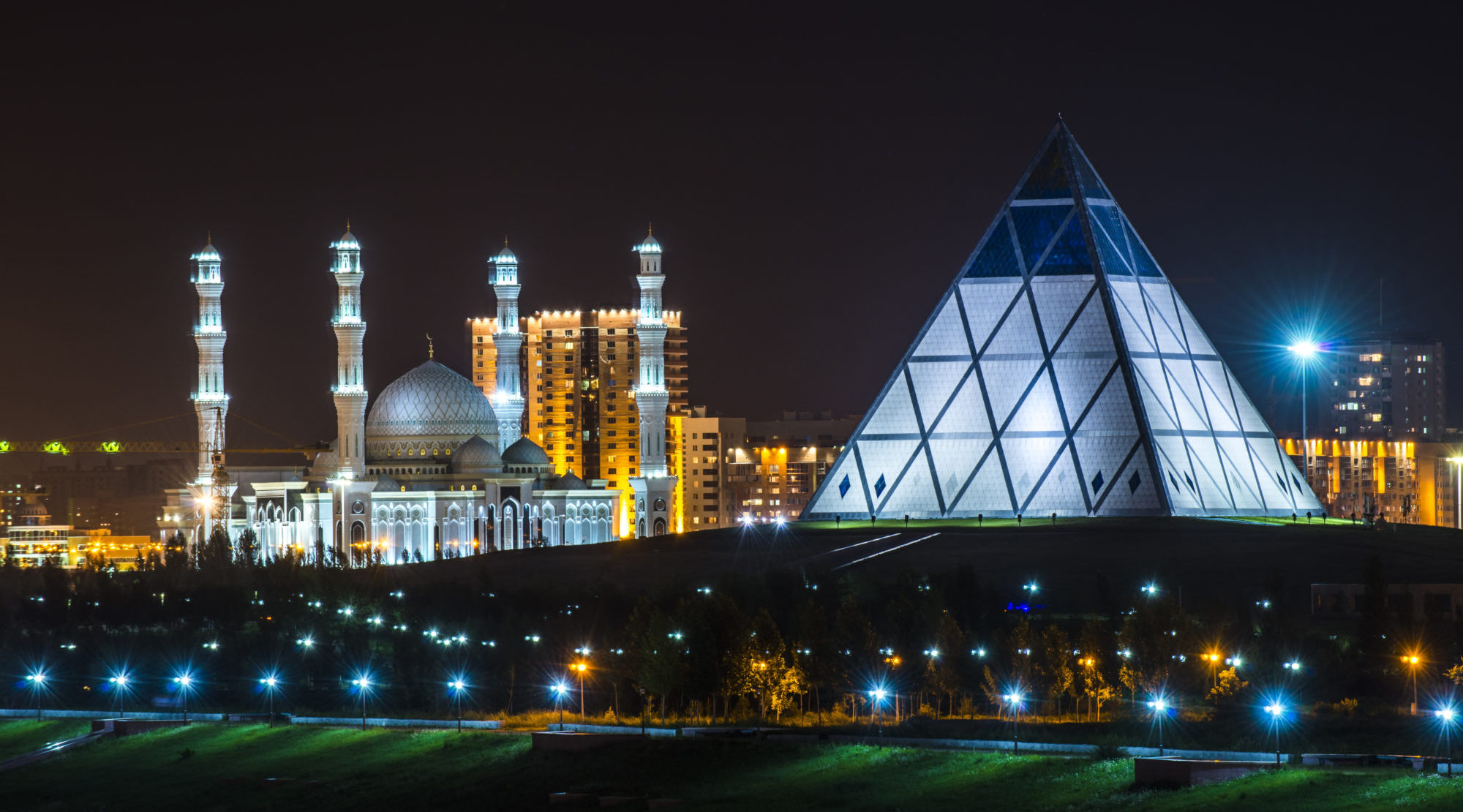Nur-Sultan
Geographical position and climate
Nur-Sultan is the northernmost capital of Asia. The city is situated in central Kazakhstan on the banks of the Ishim River. It is located in the steppe and has an extreme continental climate – summers here are hot, while winters are very dry and cold. Nur-Sultan is the second-coldest capital city in the world.History of the city
The city was founded in 1830 and its first name was Akmolinsk, then in 1961 it was renamed Tselinograd. In 1992 the city’s name was changed to Akmola. Akmola became the capital of Kazakhstan in 1997 and in 1998 the city received its present name Nur-Sultan.Economy of Nur-Sultan
The economy of the city is based on trade, transport and construction. It is a special economic zone. Nur-Sultan is an important centre for business and trade. The most important branches of industry are the food processing industry, mechanical engineering and production of construction materials. The city is a centre for culture, sport, healthcare and education.Architecture and sights
Nur-Sultan is a beautiful modern city. The author of the Master Plan of Nur-Sultan is the famous Japanese architect Kisho Kurokawa. There are a lot of modern futuristic buildings, skyscrapers and monuments. The Baiterek memorial is the symbol of Nur-Sultan; it is also considered the geographical centre of the Eurasian continent.
There are a lot of beautiful parks and fountains in Nur-Sultan, the most famous of which is the Tree of Life fountain. In the city there are also theatres and museums, concert halls and trading and entertainment centres. As Nur-Sultan is the capital of the country there are government buildings and the residence of the president.





